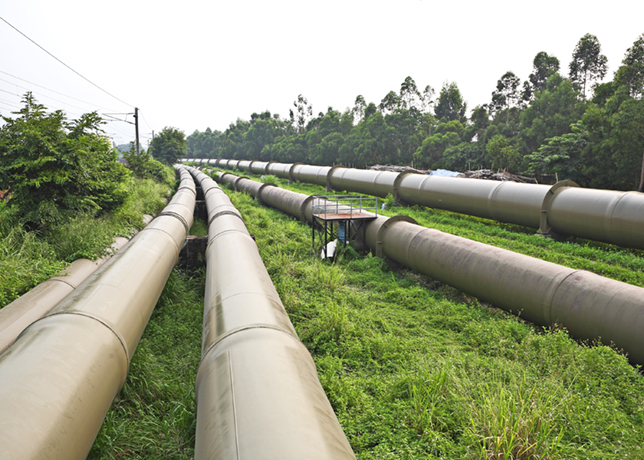Advancements in computational modelling and experimental research are transforming how the oil and gas industry manages multiphase flow—the simultaneous movement of gas, liquids, and sometimes solids through pipelines. Sophisticated tools like AspenTech’s HYSYS® and the Tulsa Unified Model (TUM) are enhancing flow prediction accuracy, boosting efficiency, reducing costs, and improving safety and sustainability in pipeline operations.
Understanding the Challenge
In oil and gas transport, especially from offshore platforms to onshore facilities, fluids often move in unprocessed states. This mixture of gas, oil, and sometimes water or solids creates multiphase flow, which is complex to predict and manage due to varying flow regimes like stratified, slug, annular, and bubbly flow.
These regimes are influenced by pipeline geometry, fluid properties, and flow rates, affecting critical operational parameters such as:
- Pressure gradient (pressure drop per unit length)
- Liquid hold-up (percentage of liquid in the pipe)
- Frictional losses
Accurate modelling of these factors is crucial to designing pipelines that are both efficient and resilient.
Economic & Operational Implications
Transporting multiphase mixtures without separating them at the source can significantly cut infrastructure costs. A case in point is Vietnam’s Con Nam Son field, where a 420-km pipeline carries untreated gas and oil to processing facilities, avoiding the need for expensive offshore separators.
However, this efficiency introduces challenges. For example, slug flow, characterized by alternating pockets of liquid and gas, can lead to severe pressure fluctuations, damaging infrastructure and downstream equipment. To prevent such issues, operators implement flow assurance strategies, addressing risks like hydrate formation, wax buildup, and corrosion, especially in deepwater environments.
Modelling Tools and Techniques
To predict and manage multiphase flow, engineers use correlation-based models. Aspen HYSYS offers a range of these, from simpler empirical models like Beggs and Brill to more advanced mechanistic models such as the Tulsa Unified Model.
- Empirical models are derived from experimental data and work well under specific conditions but often fail outside those limits.
- Mechanistic models are based on fundamental physics, offering broader applicability but requiring complex assumptions that can make simulations unstable or slow.
In a recent AspenTech study, these models were compared against a large experimental dataset from the Tulsa University Fluid Flow Project (TUFFP)—a 35-year research initiative. Findings showed:
- The Tulsa Unified Model offered superior accuracy across various pipeline inclinations.
- Empirical models tended to overpredict pressure gradients, particularly in horizontal pipelines.
- The Aziz model performed best for vertical flows in gas-condensate systems.
Despite strong results, these tests used lab-scale setups with non-hydrocarbon fluids, raising concerns about how well they scale to real-world pipeline conditions.
Recent Innovations and Hybrid Approaches
To close the gap between lab data and field applications, researchers are enhancing mechanistic models with machine learning (ML). These hybrid models use vast datasets to fine-tune predictions dynamically, minimizing the need for manual calibration.
Computational Fluid Dynamics (CFD) tools now simulate 3D flow patterns, offering deeper insights into interactions between gas, liquids, and solids. Companies like SLB are combining CFD with real-time monitoring, enabling pipelines to adjust operations dynamically to prevent slugs, blockages, or failures.
In flow assurance, chemical solutions like anti-agglomerate hydrate inhibitors are evolving, while advanced coatings are reducing corrosion risk. Digital twins—virtual replicas of pipeline systems—simulate flow behavior under different conditions, supporting predictive maintenance and reducing unplanned downtime. For example, Equinor’s Johan Sverdrup field uses digital twins to manage flow, achieving a 20% reduction in downtime.
Challenges Ahead
Despite progress, significant hurdles remain:
- Three-phase flow (gas, oil, water) is less understood due to limited experimental data.
- Scaling models from lab to field, especially for long, inclined pipelines, is still difficult.
- Environmental regulations are pushing for greener flow solutions.
Some innovations helping address these challenges include:
- Electrified subsea systems (e.g., by TotalEnergies) that lower emissions.
- Open-source modelling platforms like OLGA, which support greater transparency and collaboration across the industry.
The Future of Multiphase Flow
As pipelines stretch into deeper waters and more extreme conditions, mastering multiphase flow will be key to balancing efficiency, safety, and environmental responsibility. The integration of AI, machine learning, IoT, and digital twins promises a new era of real-time, adaptive flow management.
Research collaborations like TUFFP continue to grow experimental databases, while industry calls for standardizing correlations—a step that could make model selection more consistent and reliable across projects.
With smarter tools and data-driven modelling, the oil and gas sector is poised to overcome longstanding flow challenges and meet the demands of a rapidly evolving energy landscape.


